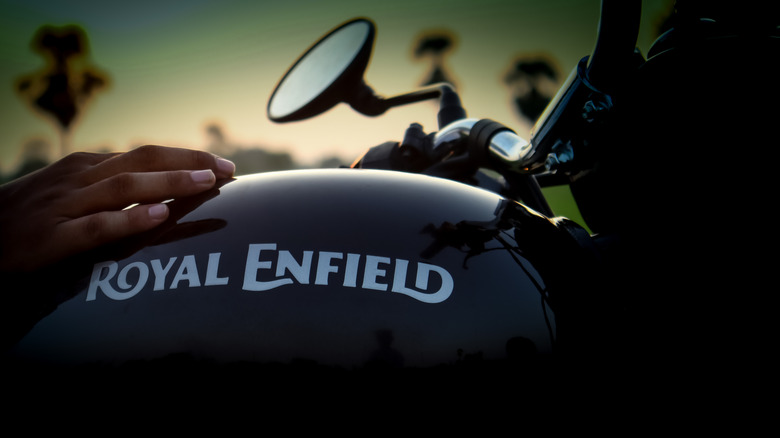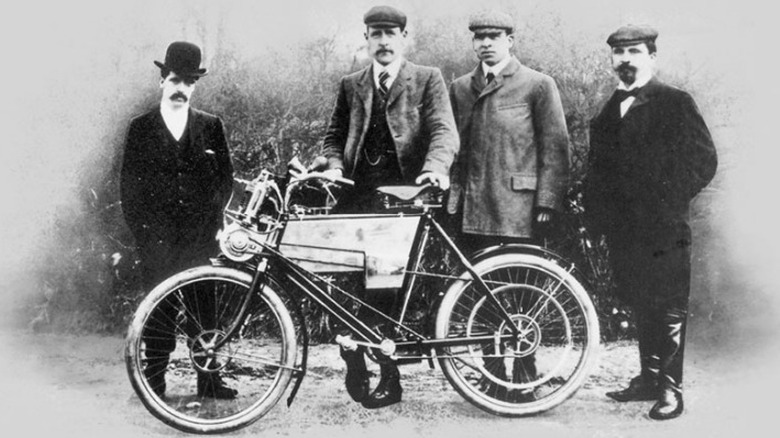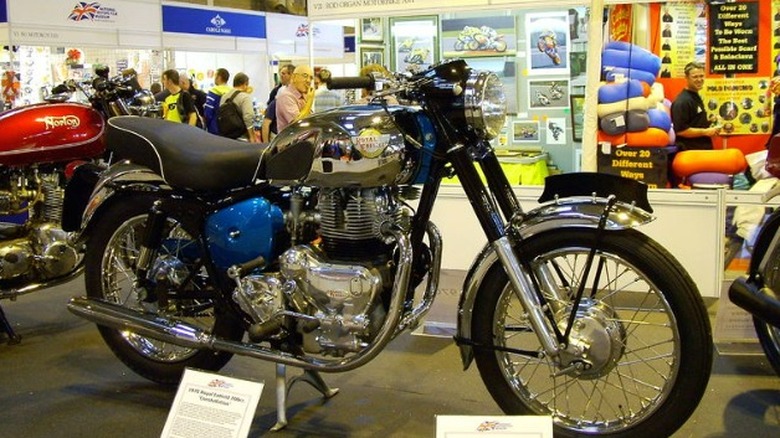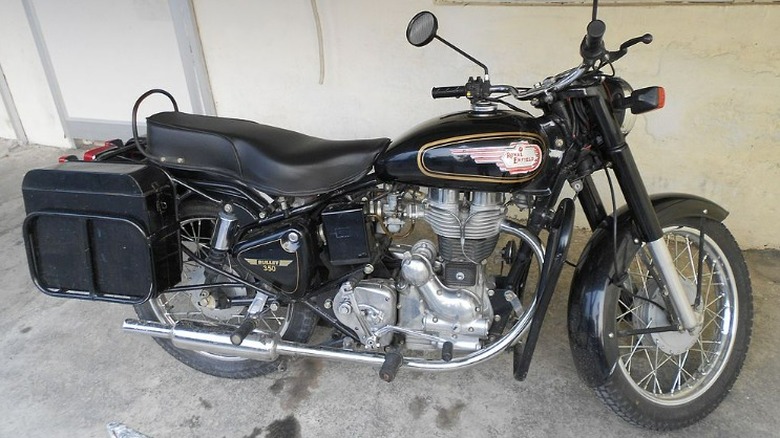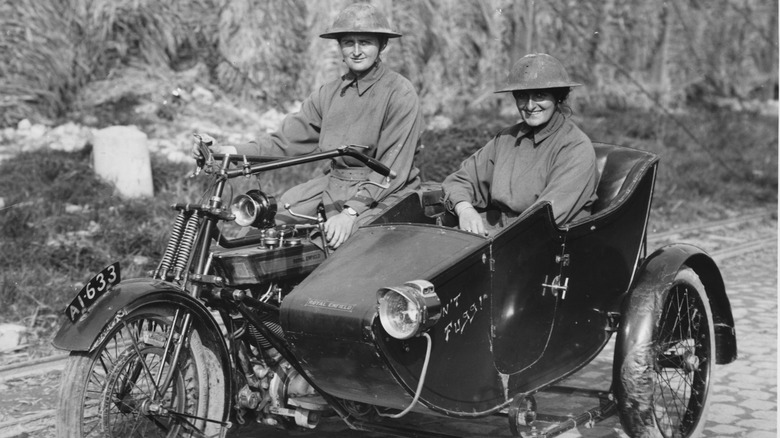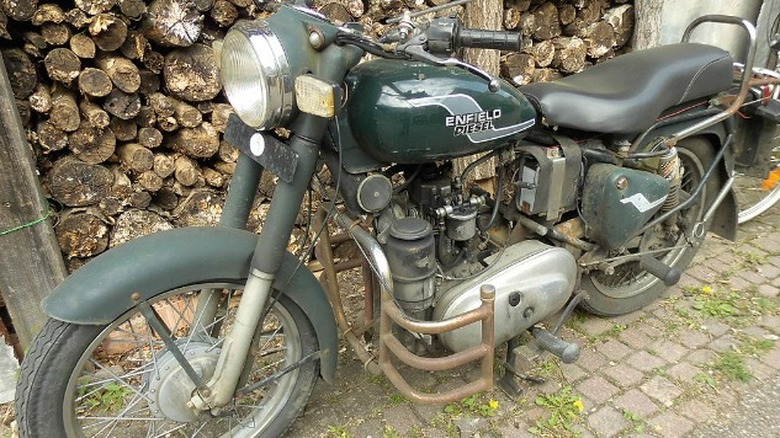5 Things Every Motorcycle Enthusiast Should Know About Royal Enfield
Motorcyclists have a lot to celebrate. From advancements in cost-effective electric motorcycles, to modernizations in classic touring models, those who love getting out on the road without the confines of a car's cabin have hailed the continuous progress that the motorcycle industry has brought forward.
One brand that many will be familiar with is Royal Enfield. The company showcases a rich backstory that begins in England, and has taken Royal Enfields all across the globe. In the third quarter of 2022 alone, Royal Enfield sold 203,451 motorcycles, enjoying a year-on-year net profit of $80.41 million.
Royal Enfield has continued to present itself as a force in the motorcycle industry. Since 1955, the motorcycles have been produced in India, and from 1967, the brand has lived primarily in its Indian hub (even exporting Bullet models back to the U.K. market). Today, Royal Enfield has re-established a research and development facility in England, only 50 miles from the original factory in Redditch. That being said, the highlights of Royal Enfield's history don't do the brand justice.
From these motorcycles' utility as historic tools of military victory, to the future of Royal Enfield including its new "Flying Flea" design (which borrows its name from a WWII-era Royal Enfield), these are five features of the brand that enthusiasts must know.
Royal Enfield is the oldest motorcycle brand still making motorbikes
Royal Enfield has a lengthy history in the motorcycle space. The brand has existed in some form since 1891, when Bob Walker Smith and Albert Eadie purchased a needle manufacturing company that had recently transitioned into producing bicycles. Alongside many other early motorcycle brands, bikes were a common endeavor.
Bike production was just one of the brand's focal points, however. The operation began manufacturing precision components for the Royal Small Arms Factory in 1893, contributing to English rifle manufacturing in Enfield. The next year, they renamed their bicycles Royal Enfields, and affixed a new trade slogan that would remain central in the company's marketing to this day: "Made Like a Gun."
The company later worked on motorized bicycle designs, and in 1898, Bob Walker Smith developed a quadricycle. The vehicle was designed with two bicycle frames, and was powered by a 1.5 horsepower De Dion engine. Finally, in 1901, a distinguishable Royal Enfield motorcycle is born. The motorbike was powered by another 1.5 horsepower engine, and made its debut at London's Stanley Cycle Show. The bike was operated with the help of the front-mounted engine and a rawhide belt to drive the rear wheel.
The date of this design places Royal Enfield as the longest producing motorcycle company in the entire world. In 1909, the bike would see a substantial upgrade with the inclusion of a V-twin engine, and in 1914, a two-stroke powerplant would grace the bike's frame.
The company produced the world's first superbike
In the 1950s, Royal Enfield added two blazing fast motorcycles to their production lineup, the "Constellation" and "Super Meteor." Both motorcycles are powered by twin cylinder engines and were incredibly fast. HotCars notes that when released to the market, they were the fastest motorcycles available to consumers.
The Super Meteor 700 entered the U.S. market in 1952. It boasted a top speed of 100 miles per hour, powered by a 692cc twin-cylinder OVH engine. It was air-cooled and produced 36 brake horsepower (later boosted to 40 brake horsepower), and also utilized a four-speed gearbox. This bike would remain available for about 10 years, before being replaced by the Interceptor 750.
The Constellation, on the other hand, entered the picture in 1958 specifically for the American marketplace, and topped out at an improved 110 miles per hour. This motorcycle was also propelled by a 692cc parallel-twin engine (also outputting 36 brake horsepower). The bike was a powerhouse, to be sure, but it was known for reliability issues and was a short-lived option for motorcyclists (leaving the market in 1963).
[Featured image by Reg Mckenna via Wikimedia Commons | Cropped and scaled | CC BY 2.0]
For a time, Royal Enfields were sold as Indian Motorcycles in the U.S.
Another fascinating piece of trivia is the fact that Royal Enfields made their way into the U.S. market as rebranded Indian Motorcycle models. In the late 1950s, Indian Motorcycles stopped producing their own bikes and instead imported Royal Enfields to re-sell as their own rebranded vehicles. They painted the bikes red and added their own stylizations before putting them on the market.
Royal Enfield models were initially branded and brought to the marketplace by Indian, with advertising from 1953 noting "Indian distributes the complete line of Royal Enfield Models," including the Meteor 700, 500 Bullet, and 500 Twin. This changed shortly after Indian shuttered its own production (also in 1953). From 1955 to 1959, Indian sold the Royal Enfield Bullet as either an Indian Westerner or Woodsman, and Clippers were rechristened as Indian Fire Arrows and Hounds Arrows, to name a few.
Indian Motorcycles was owned at the time by the British company Brockhouse Corporation, which also operated Royal Enfield's U.S. distribution. Indian's connection to a legendary British motorcycling brand, which was undergoing its own metamorphosis, isn't actually all that salacious or surprising. Even so, this rebranding effort was short lived. In the 1960s this practice ceased, returning Royal Enfields to the U.S. market under their own name.
[Featured image by Yann Forget via Wikimedia Commons | Cropped and scaled | CC BY-SA 4.0]
Royal Enfields have been military tools on multiple occasions
Unsurprisingly, an iconic British motorcycle brand that's been around for over a century was a central figure in the 20th century's global war efforts. During both World War I and World War II, Royal Enfield produced a huge volume of motorcycles to aid the allies in their fight against enemy European powers.
During the first World War, Royal Enfield produced two-stroke engine motorcycles that represented the brand's largest bike to date. The motorcycles utilized a 770cc V-twin engine that produced six horsepower. The bike came equipped with a sidecar that could support a Vickers machine gun and operator for speedy cavalry-esque maneuvers, or quick defense while operating in a scouting or message relay capacity. These motorcycles weren't just deployed to the British army, though. American, Belgian, French, and Russian militaries all made use of Royal Enfields during World War I.
Later, during World War II, Royal Enfield developed the WD/RE, known affectionately as the "Flying Flea." These motorcycles were routinely dropped alongside paratrooper units, and could cover a distance of 130 miles on a single tank of gasoline.
During its third act in a military livery, 500 Royal Enfield Bullets were purchased in 1952 by the Indian government and Madras Motors for the Indian army. Shortly after gaining independence, the national government was seeking a reliable border patrol asset. This partnership has lasted for generations, and is intimately responsible for the launch of Enfield India in the first place.
The brand continues to experiment with alternative power options
Royal Enfield has remained an innovator in the motorcycle space. From the brand's participation in the 1,000 Mile Trial in 1900 (a route from London to Edinburgh, and back again) with one of its 1.5 horsepower quadracycle vehicles, to the modern development of a new "Flying Flea," the brand has often brought something new to the market.
In the late 1980s, Royal Enfield experimented with a diesel-powered motorcycle option. The Taurus was very similar in style to the traditional Bullet aesthetic. It utilized a 325cc diesel engine, though, that produced a 6.5 horsepower output and a top speed of just 40 miles per hour.
Yet, the diesel engine wouldn't quit on riders, offering a 200 mile per gallon estimated gas mileage. While the bike was slow, it revolutionized the concept of filling up the tank at a time when consumers were still thinking about gasoline shortages after the 1979 energy crisis.
Another revamp comes in the form of a 2020 trademark filing for the name Flying Flea, and Royal Enfield's CEO B. Govindarajan has been vocal about the company's pursuit of a new EV platform to add to the lineup. However, buyers may be waiting until 2025 to see these EV motorbikes from the iconic Royal Enfield brand.
[Featured image by Güwy via Wikimedia Commons | Cropped and scaled | CC BY-SA 4.0]
